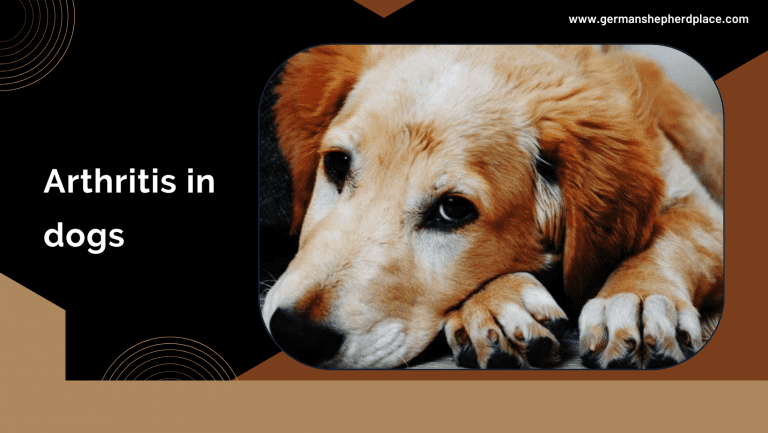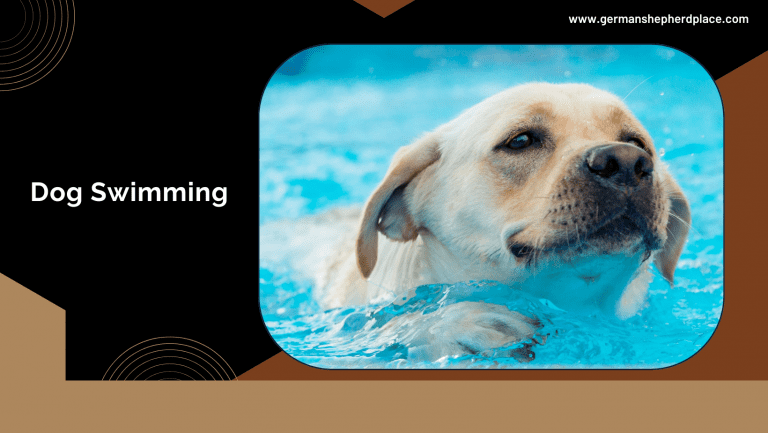Long Haired German Shepherd – Complete guide
The Fact Sheet – German Shepherd
| Breed name | German Shepherd |
| Origin The Country | Germany |
| First Breed Appearance | 1899 |
| Weight of the Adult Dog – Male | 30-40 kg |
| Weight of the Adult Dog – FeMale | 22-32 kg |
| Height of the Dog – Male | 60-65 cm |
| Height of the Dog – FeMale | 55-65 cm |
| Life Spam of the German Shepherd | 9-13 years |
The Friendship of German Shepherd and the Humans – Time Line
The breed appeared already in the 7th century on the territory of modern Germany. The ancestors of the German shepherd dogs were mountain shepherd dogs, which explains their original purpose.
However, by the 19th century, there was a significant decrease in the number of pastures due to the increase in arable land, industrial development, and the growth of cities. As a result, the herding role of the German Shepherd receded into the background. Residents of the sprawling cities began to look closely at the exceptional watchdog and service qualities of this breed.
shepherd dogs easily cope with new tasks. The success of using the Germans in official business led to the fact that in 1880 they began to serve in the Prussian army. During the First World War, there were already about 50,000 service shepherds in the German army.
In the middle of the 19th century, people really needed dogs that could guard livestock. The dog had to be strong, powerful, easy to control. Also, the dog had to live quietly in an urban environment.
Max Emil Frederik von Stefanitz took on the task of breeding such a breed. He knew biology well, was versed in cynology, and clearly understood what they wanted from him. The specialist had at his disposal all types of the Old German Shepherd Dog.
In 1882 the first dog to be registered as a German Shepherd was the Greif male. His color was off-white, it was he who worked out the entire program perfectly, without frightening the sheep. But this dog did not fit in terms of external parameters – nevertheless, the color should be beautiful and noble.
In 1889, another male was found, which became the ideal representative of the German Shepherd breed. He had the character and appearance of a gentleman: the dog was distinguished by intelligence, was handsome, with a strong bone and a noble bearing.
Today the German Shepherd is one of the most widespread breeds in the world. These dogs are used in the service to search for explosives and drugs, to catch criminals, as guard and guard animals. German Shepherds are great helpers for people with disabilities and wonderful companion dogs.
Long-haired German shepherd temperament
Character
This temperamental, self-confident animal has a fairly stable psyche. Along with a healthy perception of its individuality, the German Shepherd is prone to unquestioning obedience to the owner, easy to train, responds well to the nickname. The dog is devoted to relatives, calmly and restrainedly treats strangers, easily find a common language with children, and support their games.
The German Shepherd, like many other large breeds, takes a lot of time and attention to it. It is better for the dog to live in a private house so that there is access to the street, garden, or courtyard.
The dog has a well-developed instinct to protect his loved ones. These dogs get along well with children and other animals, provided that the first acquaintance occurred when they were a puppy. An adult dog is unlikely to accept a new four-legged family member, although with the intervention of a professional dog handler this problem can be solved.
The German Shepherd is both a police officer, a nanny, a companion, a comrade, and a loyal protector. It is worth remembering that this breed will not be suitable for you if you work hard and often leave. The dog will be sad for the owner, which can negatively affect its behavior.
German Shepherds are excellent watchmen, but it is better not to tie them in one place, let them run freely on their territory. Dogs need a large yard where they can release their energy and warm up.
Buying a long-haired german shepherd puppies
In order to reduce the risk of your pet getting sick with the aforementioned hereditary pathologies, you should be very responsible when buying a puppy. It is better to take a future friend from a little grown-up (over 3 months old) and from trusted breeders.
When buying, you need to pay attention to the activity, social adaptability, positioning of the limbs, cleanliness of the coat, and general hygiene of the baby. It is important to see the puppy’s parents live, to get acquainted with their external data, and inquire about their health in order to save money on the treatment of chronic diseases in the future.
Care and maintenance of long-haired german shepherd
When starting a dog, remember that German Shepherds shed very much. They need to be combed out 3-4 times a week. Also, you need to walk a lot with the dog – train it physically and mentally, so if you spend a lot of time at work, and on weekends prefer to lie on the couch than go for a walk, this breed is not for you.
German Shepherds do not require special care, but the owner must constantly monitor the condition of the ears and teeth. The teeth should be cleaned with a special paste or allowed to gnaw on raw bones. Shepherd’s nails should be trimmed every three weeks because they can be painful when jumping and walking on asphalt.
When you start a German Shepherd in your home, be prepared to fork out for its food. The breed is large, so the dog needs 3-4 meals a day.
If you decide to feed your dog dry professional food, then it must be super-premium. However, many owners prefer to feed the German Shepherd with natural food: offal, meat trimmings, beef tripe, vegetables such as pumpkin, squash, carrots, as well as eggs and cottage cheese work well. If you notice that your dog is starting to gain weight, you need to cut back on portions. If it looks thin, on the contrary, increase it.
When a person decides to take a German Shepherd home, he asks the question – does it smell like a dog? According to veterinarians, German shepherds smell only if they are in the rain for a long time or swim in the river in summer. Also, dogs can smell after bath procedures, so it is recommended that after bathing, wipe the dog dry with a towel and blow-dry.
Health and disease
With proper care, your pet will live from 9 to 13 years. Often these dogs suffer from hip dysplasia, and many of them are already born with this ailment. When the dog turns one year old, it is imperative to conduct a diagnosis of the joints in order to identify the disease in advance and take corrective therapy.
Epilepsy and blindness are also common in German Shepherds.
German Shepherds are considered to be strong and hardy, with relatively good health. However, just like representatives of most artificially bred breeds, they have a tendency to some hereditary diseases.
First of all, it is worth noting a weak musculoskeletal system: dogs of this breed are very susceptible to hereditary joint diseases (such as dysplasia of the elbow and hip joints) and pathologies of the spinal column (discographies, Cauda equina syndrome ).
In long-haired german shepherd puppies, you can find the so-called wandering lameness – panosteitis, which manifests itself in the form of spontaneous soreness of different limbs at the age of 5 to 12 months.
Allergic diseases, manifested in the form of skin pathologies, can also occur. Dogs prone to allergic dermatitis may have various kinds of pyoderma, otitis media, furunculosis, eosinophilic pemphigus …
Less common pathologies include diabetes mellitus and one of the types of cardiomyopathy (heart disease).
Given the tendency of shepherd dogs to skin pathologies, you should be especially careful about their hygiene. The thick and harsh coat of the German Shepherd is easy to care for – just brushing the dog twice a week. In addition, during shedding, the hair falls out especially abundantly and dead hair must be combed out daily. It is best to do this after every walk.
It is necessary to bathe the shepherd dog only when it is really necessary – with persistent dirt on large areas of wool. Usually, two baths a year are enough and not more often than once a month since the use of shampoo can lead to an imbalance of microflora and a decrease in the protective properties of the dog’s hair.
Education and training
Training should be started at a young age. German Shepherds can learn simple commands in just a few repetitions.
The puppy needs to be trained in a playful way, to be able to interest him. Do not show aggression – the dog will not understand it, and contact with it can be easily lost because of this.
First of all, the dog must learn its nickname. You need to stroke her head and say her name. When he becomes a little older, you need to learn the commands “Come to me”, “Sit”, “Lie down”, “Voice”, “Give a paw.” You cannot punish a small puppy for not following the command.
You also need to arrange for him a place where he will sleep, and also learn the command “Place”.
It is imperative to teach the commands “Fu” and “You cannot”. It is important to wean the dog from ground picking up.
From 6 months old, the puppy should be taught to muzzle, rewarding with sweets for good behavior. The dog should be wary of strangers, so do not allow guests to pet the dog or play with him.
Final Words
long-haired german shepherd is one of the most famous breeds. A versatile service dog, an excellent shepherd, an excellent helper, protector, and companion – all these are the characteristics of the German Shepherd.
A feature of the German Shepherd breed is a strong attachment to the owner, the ability to feel and understand his mood. Dogs are not prone to aggression, are friendly to people, smart and unpretentious. However, the positive qualities of this breed are revealed only through training and hard training
Related Links:
- https://en.wikipedia.org/wiki/German_Shepherd /By Wikipedia
- https://www.wikihow.com/Groom-a-German-Shepherd /By Wikihow
- https://www.wikihow.com/Choose-a-German-Shepherd-Puppy /By Wikihow
- https://www.wikihow.com/Buy-a-German-Shepherd-Puppy /By Wikihow
- https://www.wikihow.com/Take-Care-of-a-German-Shepherd /By Wikihow
- https://www.wikihow.com/Identify-a-German-Shepherd /By Wikihow
- https://www.wikihow.com/Train-a-German-Shepherd /By Wikihow





